Ukrainians question the ease of Russian capture of Kherson | Russia-Ukraine war News
Kyiv, Ukraine – The Syvash, or the Rotten Sea, is what really divides Crimea from mainland Ukraine.
It is a labyrinth of lagoons, salt marshes, wetlands and quagmires with only three strips of land wide and firm enough for the roads that link the peninsula with the southern Ukrainian region of Kherson.
Greeks, Mongols, Turks, Russians and Nazi Germans focused on Syvash crossings while invading or defending Crimea, a trade hub that connected Eurasian steppes with the Mediterranean.
After Russia’s annexation of the peninsula in 2014, Ukraine shut down the railway, making a bridge and a dam near the town of Chonhar the point of entry for thousands of people and cars.
The bridge, dubbed “Crimea’s back door”, along with two other crossings on the Perekop isthmus, was studded with explosives Ukrainian servicemen were instructed to blow up in case of a Russian invasion of the mainland.
Except they did not.
Early on February 24, Russian troops shot at a handful of border guards and servicemen, seized the crossings and poured into Kherson.

Tens of thousands of soldiers, hundreds of tanks and armoured vehicles trudged northward spreading across the Belgium-sized province.
“Had they blown up the bridge on Chonhar, nothing would have happened,” Olena, a resident of Henichesk, a resort town on Kherson’s Azov Sea coast, told Al Jazeera.
“They used to say it had been mined since 2014. Turns out it wasn’t,” she said.
Ukraine’s defence ministry refutes such claims.
“The bridge was mined, but we faced enemy forces that outmanned us 15 times,” it said in a statement on April 26.
Bridges to blow
It was not the only bridge the Russians had to cross.
Kherson is an arid region of flat, treeless steppes that sits in the delta of the Dnipro, Europe’s fourth-longest river.
Dozens of its tributaries and irrigation canals crisscross Kherson turning swaths of farmland into virtual islands connected by bridges.
Many of them were also supposed to be destroyed, turning each crossing into a logistical nightmare – or a kamikaze mission in case of fire from the Ukrainian military.
“In case of retreat or assault these bridges should have been blown up, but it hasn’t been done,” Kherson’s Mayor Ihor Kolykhaev told the Ukrainska Pravda newspaper on April 5.
But only Vitaly Skakun, a 25 years-old sapper, blasted the bridge on the way to Henichesk – and was killed by the explosion.
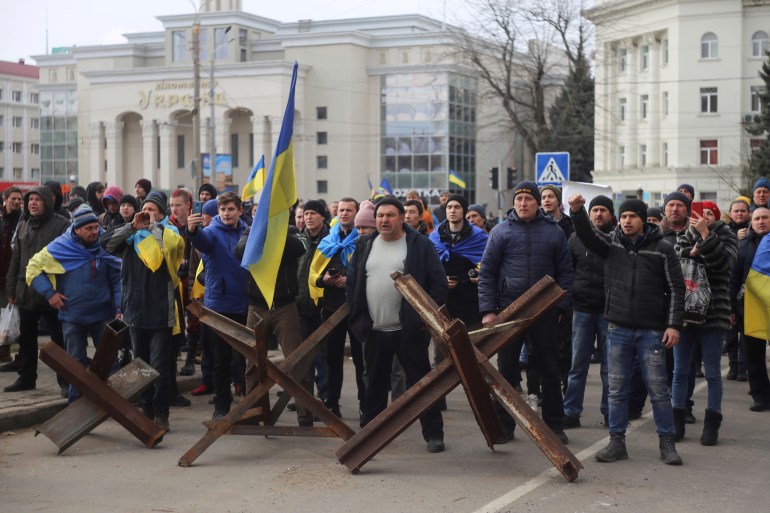
The rest of the bridges remained intact – including Antonovskiy which stretches almost 1,400 metres over the Dnipro’s silky-blue waters and is the only direct link between the regional capital, also named Kherson, and the region’s south.
The bridge’s destruction could have halted the city’s takeover for days, if not weeks.
“In the first days, when the fighting was going on, I was sure that they would blow up the bridge, but alas,” a Kherson resident told Al Jazeera on condition of anonymity because she “fears for her life” amid daily abductions and arrests.
The biggest war prize
After days of fighting that killed hundreds of Ukrainian servicemen, barely trained militias and civilians, Russians seized the Antonovskiy bridge and rolled into the city of Kherson.
With a population of about 300,000, it became the largest urban centre Moscow seized in Ukraine at the time when the fall of Kyiv and the toppling of President Volodymyr Zelenskyy’s government seemed imminent to many.
Only Mariupol, which lies about 400km (250 miles) to the east and had a population of 430,000, would be a bigger war prize.
But its capture would take Russians 82 days of pummelling that turned most of the Azov Sea port into rubble and ruin, killing an estimated 22,000 civilians.
It took Moscow only a week to seize Kherson, which became its biggest, most strategic and economically valuable war trophy.
For the first time, Russians crossed the Dnipro that bisects Ukraine into the mostly Russian-speaking left bank and the predominantly Ukrainian-speaking right bank.
While the assault on Kyiv and northern Ukraine was complicated by dense forests and was aborted by early April, Ukraine’s south is mostly flat and open.
The Russians started their assault on neighbouring regions of Odesa, Mykolaiv and Zaporizhia – and stretched Ukraine’s line of defence by hundreds of kilometres.
Treason?
Moscow trumpeted Kherson’s takeover on March 2.
On the same day, Colonel Ihor Sadokhin of the Ukrainian Security Service, the main intelligence agency, was detained and charged with treason.
Kherson’s key anti-terrorism official was accused of “guiding enemy fire” during the evacuation of law enforcement officers.
A month later, his boss, Kherson’s top intelligence officer, General Serhiy Krivoruchko, was stripped of his rank.
Zelenskyy called him an “anti-hero” but offered no further explanation.
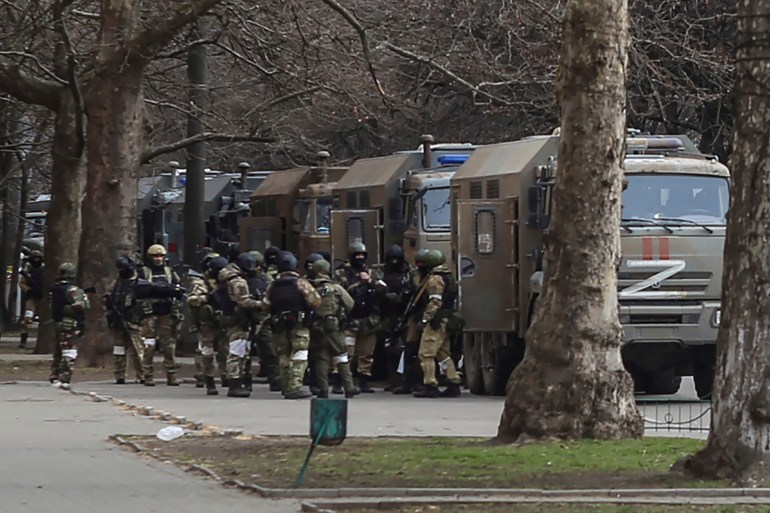
Many civilians in Kherson are adamant that key civilian and military officials “surrendered” the region.
“They surrendered on the very first day,” Halyna, who withheld her last name, told Al Jazeera.
A top official in Kyiv had a far more vulgar answer to why Kherson was taken over so humiliatingly quickly.
“We f*cked up,” presidential adviser Oleksiy Arestovych, a charismatic public speaker known for his optimistic spiels, said in televised remarks on May 9.
“Who, what and how – yes, we will sort it out, and law enforcement agencies are sorting it out, too. Because the biggest question is where there was incompetence and where there was treason,” he said.
A top military expert said that only a detailed investigation and trials will determine what officials failed – or chose not to give an order – to blow up the bridges.
“Undoubtedly, all the preparations didn’t work. That means some people should be held responsible,” said Lieutenant General Ihor Romanenko, former deputy chief of Ukraine’s general staff of armed forces.
“There will have to be public trials, because the measure of responsibility is very high,” he told Al Jazeera.
Other observers call the “demining” of Kherson’s bridges a “myth” that tarnishes the heroism of Ukrainian servicemen.
“Attempts to create a myth about the ‘demining’ devalues the feat of Ukrainian forces,” Kyiv-based analyst Aleksey Kushch told Al Jazeera.
“The occupation of southern Ukraine is a tragedy triggered by a monstrous disbalance of military power between Ukraine and Russia, not by mythical treason,” he said.
No more droughts?
Kherson is the beginning of a “land bridge” to separatist-held Donetsk and Luhansk regions and the adjacent Russian border.
Its hydropower stations – along with the Russia-seized Zaporizhzhia nuclear power plant – will feed energy-starved Crimea.
Its wheat fields, orchards and rice paddies would lower the price of food supplies that were mostly delivered from Russia’s southwestern Krasnodar region via the hastily built Crimean bridge.
And, most importantly, Kherson’s water already solved Russia’s biggest conundrum in Crimea whose growing population has long surpassed two million.
The Soviet-built North Crimean Canal that begins northwest of the Syvash used to bring 1.5 million cubic metres of Dnipro’s water annually to the arid peninsula covering 85 percent of its water needs.
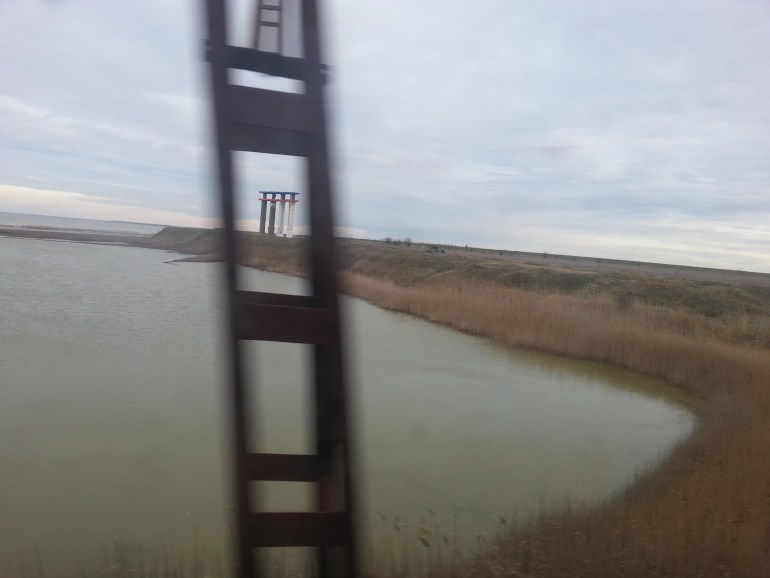
Ukraine dammed the canal in 2014, and “agriculture has been cancelled”, Valery Lyashevsky of Crimea’s State Committee on Water told Al Jazeera in 2014.
Several giant reservoirs shrank, and shortages were so severe that the water supply was at times limited to several hours a day.
One of the first things Moscow did after seizing Kherson was to blow up the dam, but it took weeks for the water to fill the badly damaged canal and flow down to southern Crimea.
Turncoats
Right after the takeover, Russian occupants seized electronic databases the fleeing Ukrainian intelligence officers failed to erase, Mayor Kolykhayev said.
The occupiers began to pinpoint, abduct and interrogate war veterans, pro-Ukrainian activists and officials.
Some returned home with bruises and wounds, and some have never been seen again.
“People disappear every day,” a Kherson resident told Al Jazeera.
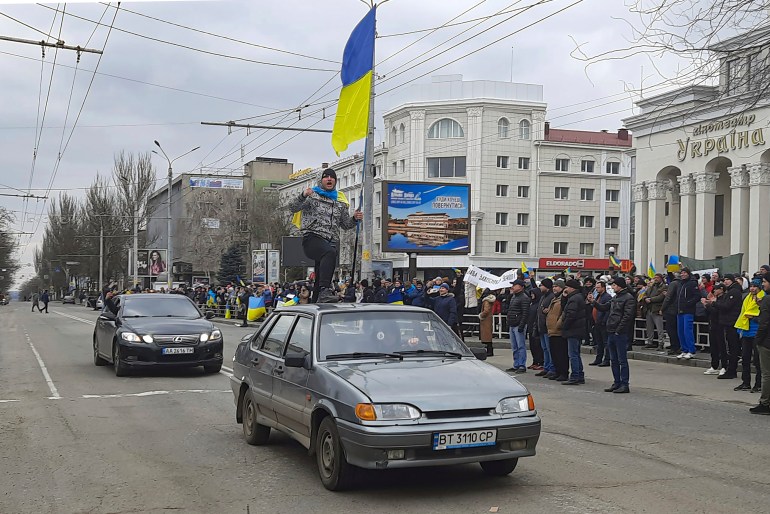
Dozens of people were forced to record videos in which they reject their anti-Russian stance.
“I underwent a complete course of de-Nazification,” each of them said in conclusion referring to the term Russia’s President Vladimir Putin used to describe his initial goal in Ukraine.
A string of former officials and public figures became turncoats, including former Kherson Mayor Vladimir Saldo who fled to Russia in 2014.
Others include members of the disbanded pro-Russian Party of Regions and its successors.
However, their administration of the region is “disjointed”, with military and civilians operating out of sync, an ex-separatist commander claimed.
“No one has clear instructions about what to do,” Igor Girkin, a former Russian intelligence officer who spearheaded the rebel takeover of Donetsk in 2014, said on Telegram on April 10.
“Even the military is uncoordinated. Commanders communicate using Ukrainian SIM cards, no one understands anything, decisions are spontaneous,” he wrote.
Pro-Ukrainians do not hide their schadenfreude.
“They will soon be at each other’s throats like rats in a barrel,” Olena from Henichesk said.
But some locals support the invaders, especially the elderly nostalgic about their Soviet-era youth.
They reject what Ukrainian officials and survivors say about the killings and raping of civilians by Russian servicemen.
“These are perverse fantasies,” said Natalya Primakova, a cosmetics distributor in Henichesk.
“Stories from Henichesk won’t be interesting to you, we have no tribulations, rapes and blood-thirst,” she told Al Jazeera in a brief interview.
Abandoned by Kyiv?
However, an anti-Russian resident corroborated her claim about the absence of widespread killings or torture of civilians that took place in Bucha and other Kyiv suburbs.
“They quietly, calmly help people. One can take as much flour, grain, sugar, all in sacks. If it wasn’t for them, there would have been famine,” the resident told Al Jazeera.
She said that many in Kherson feel abandoned by the central government and the West – especially in comparison with Mariupol, the defence of which was front-page news worldwide.
“People are imprisoned and nobody remembers them. Only Mariupol, but what about us?” she said.
Thousands leave even though crossing directly into Kyiv-controlled areas is impossible.
They travel thousands of kilometres via Crimea to get to western Russia and cross into the European Union, she said.
Asked about when she thinks Ukrainian forces would take Kherson back, she answered laconically: “Never.”


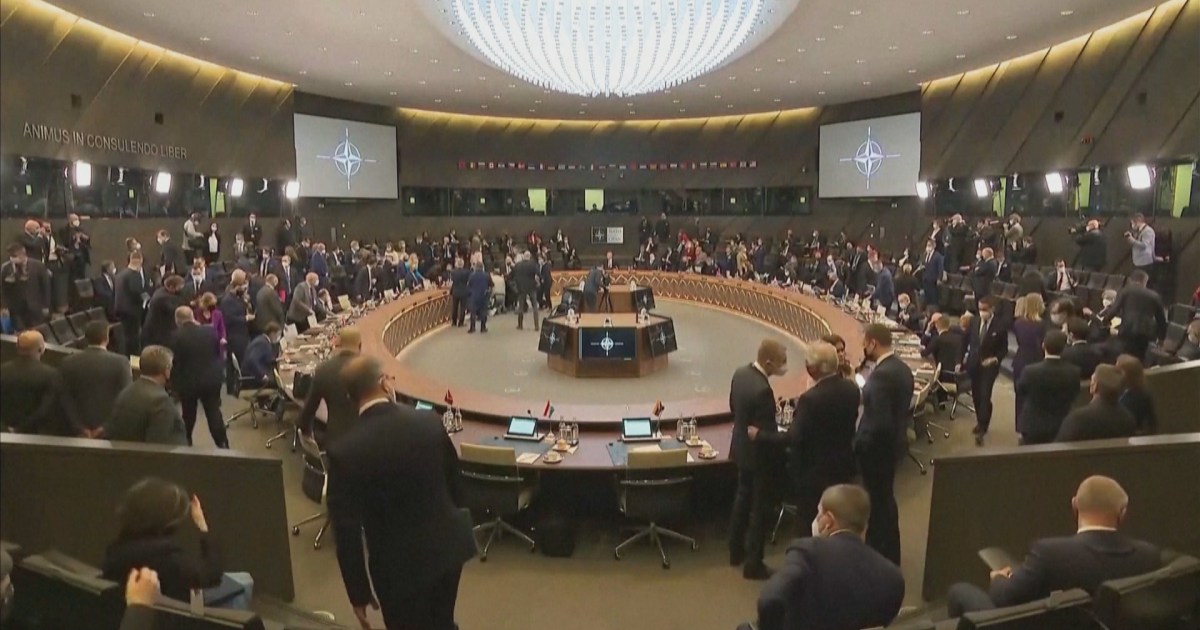

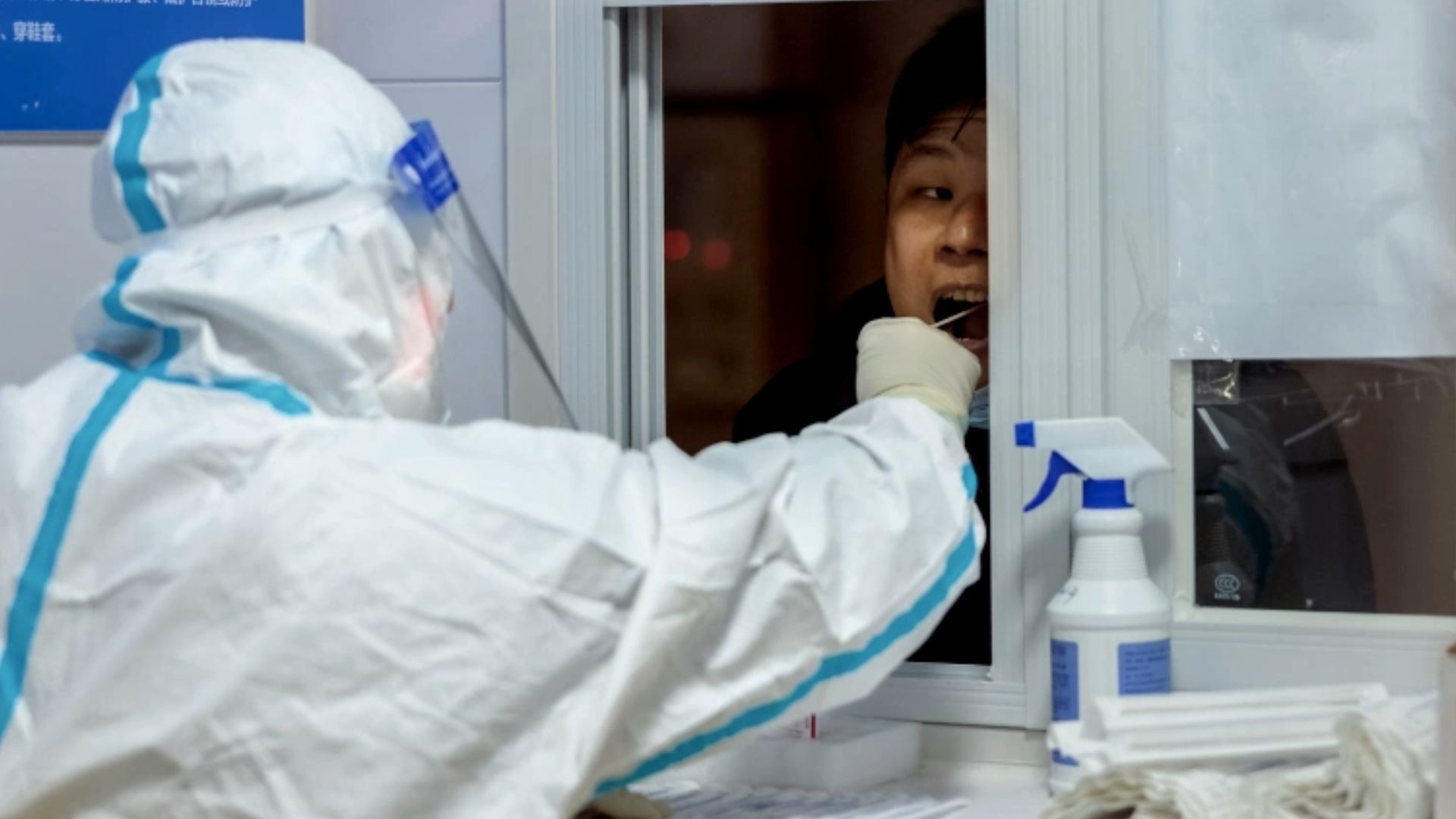
Pingback: รับทำ SEO สายขาว